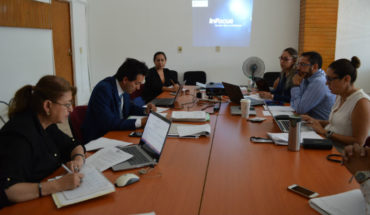In Mexico, the number of amphetamine addicts grew 775% in 18 years from 1.2 to 10.5 people who admit that they are addicted and are being treated per 100,000 inhabitants, according to data from the National Institute of Geography and Statistics (INEGI).
During 2016, Mexico ranked 15th in the Unclos Office on Drugs and Crime (UNODC) ranking with 0.2% consumption (equivalent to 25 million 500 thousand people) while the United States, the Netherlands and Poland were the most consumer of 2.9%, 1.7% and 1.7% respectively.
According to UNODC, by 2016 0.6% of the world’s population (equivalent to 4.620 million people) had consumed amphetamines.
Although Mexico ranked as one of the countries with the lowest amphetamine use internationally, in the last 5 years it has increased significantly, becoming a public health problem associated with alcohol consumption, a more complex phenomenon.
So far in 2019, Mexico was the second most widely used country among high school students with 2.7%, mainly women. The United States was the highest-consumption country with 8.1% and Canada was the third with 1.8% of that school level.
In 2000, patients receiving care at specialized facilities in Mexico were 7.6 alcohol users and 1.2 amphetamine addicts, both in rate per 100,000 inhabitants.
In 2010, the rate of alcohol users continued to rise to 21.9 patients, while amphetamine users decreased to 0.7 addicts per 100,000 inhabitants.
During 2018, both rates rebounded, alcoholism recorded 28.2 patients cared for and amphetamine use 10.5 addicts; which meant an increase of 271% and 775% respectively over the past 18 years.
Between 2000 and 2018 there was a correlation of 0.5 (mean association) between alcohol addiction and amphetamines, meaning that an increase in alcohol consumption was accompanied by an increase in amphetamine addicts by an average proportion.
At the state level the correlation in 2018 was higher by recording a value of 0.88 (high association), indicating that in states with the highest number of alcohol addicts, more amphetamine addicts were recorded, in almost the same proportion.
Mexico City was the entity with the highest number of alcohol users and the ninth in amphetamines.
Colima recorded the most amphetamine addicts and the second in alcohol addicts.
Tabasco was the state with the lowest number of amphetamine addicts and 29 in alcohol addicts.
Veracruz was the entity with the least alcohol users and ancestor in amphetamines.
During the first weeks of October 2019, he highlighted the webcasting of so-called “chemsex” parties, which under the term “perfect storm” and the use of some “emoticons” incite the mixing of sex and drugs on social media, including amphetamines .
This type of event has had a greater presence in states with tourist destinations. In the center of the country the municipality of Cuernavaca, Morelos has been one of the most affected.
According to the Youth Integration Centers (CIJ) parties with “chemical sex” represent a public health problem, since the risks of this practice involve having unprotected sex and under the influence of this type of drug, increasing the chance of contracting a sexually transmitted disease, particularly HIV, which has the highest incidence nationally in Campeche, Tabasco, Yucatan and Colima.





